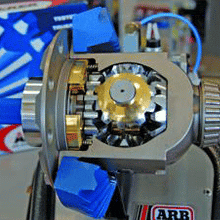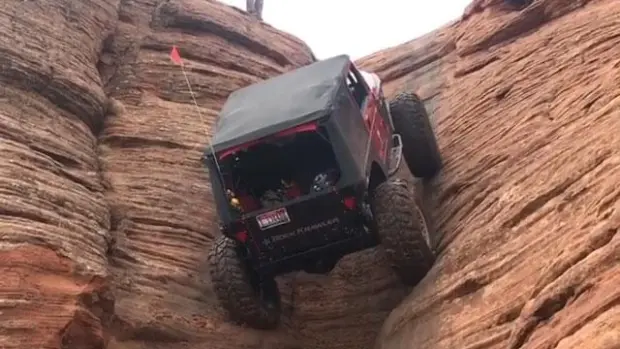In this article:
- What is a locking differential? a locking diff is a mechanical or electronic feature on an automobile to improve traction in situations where wheel slippage is likely
- What is a locking differential used for? Locking Diffs improve traction offroad and in extreme traction conditions.
- How do locking differentials work? Locking diffs ensure all wheels get power and move together which helps provide traction in loose rocks, sand, mud and on rocky offroad trails.
- How does a locking differential improve traction offroad? By locking wheel spin together you ensure power is consistently applied to the ground. Without a locking differential wheel spin would cause your vehicle to slow or stop completely until the tires find traction.

What is a Locking Differential?
A locking differential is a special type of differential that can transfer power to both wheels on an axle, regardless of wheel slippage. A standard differential allows one wheel to spin while the other remains stationary, but a locking differential keeps both wheels moving at the same speed even when there is slippage.
What is a Differential Lock Used For?
Locking differentials are mainly used for off-roading. Most people don’t need them for everyday driving because open differentials work fine for roads and paved surfaces with few obstacles like gravel or mud puddles here and there. However, if you plan on taking your vehicle out into remote areas or hitting up some aggresive trails then it’s worth considering getting one.
A locking differential can be used to improve traction offroad in situations where one wheel is on loose ground and the other is on hard ground, or in situations where there are different types of terrain or grades at opposite ends of an axle. When you’re driving on-road, you normally have a “open” or unlocked differential, which lets you turn one wheel faster than the other. This helps you steer around corners and avoid skidding. But when you go off-road, your wheels are turning at different speeds—one side might be climbing up a hill while the other is still on flat ground, for example—and that means you won’t be able to use your open differential anymore. Instead, you need something called a locking differential system or “limited slip” system to give you better traction in these situations.
How Does a Locking Differential Work?
When climbing a trail or an obstacle, your car’s wheels move at different speeds. That can cause a loss of traction when not corrected for. A locking differential compensates for any difference in rotational speed between the two axles so both remain engaged with the terrain. In order for a locking differential to work effectively, it must have some sort of mechanism that prevents one wheel from spinning faster than the other (which would cause them to slip). The most common type of locking differential uses clutches or gears that engage when there’s slippage between wheels; this allows both wheels to turn at the same speed but prevents one from slipping. It also ensures that no energy is wasted by allowing one wheel to spin faster than
How does a locking differential improve traction offroad?
When driving over aggressive trails with steep inclines or declines, over large rocks, in loose or changing road surfaces, the outcome is usually the same: a loss of traction. In a worst case scenario, your vehicle may actually stop moving over an obstacle or up a trail as it searches for traction with an open differential. Locking the differential helps to compensate for all these factors. In loose road surfaces a locked diff will ensure all wheels apply power when touching the ground. Your vehicle is much less likely to lose forward momentum while searching for traction since the locked diff usually deactivates traction control features that would divert power away from wheels that spin. However, locking the differential usually requires driving at slower speeds to avoid damaging driveline components so only use at slower speeds. Most vehicles also require the vehicle be parked and in neutral in order to engage locking the differentials so make sure you select this option BEFORE you need it.
Summary
Locking differentials are superb for a multitude of off-road driving applications. They are not, however, some sort of be-all and end-all solution for all terrain. Proper use, preparation and training are key to getting the most out of your locking diff. As discussed above, there are a variety of situations where you may want or need to use a locking differential. When you’re off road using a locking differential is often the best option to get the most traction in challenging conditions.

